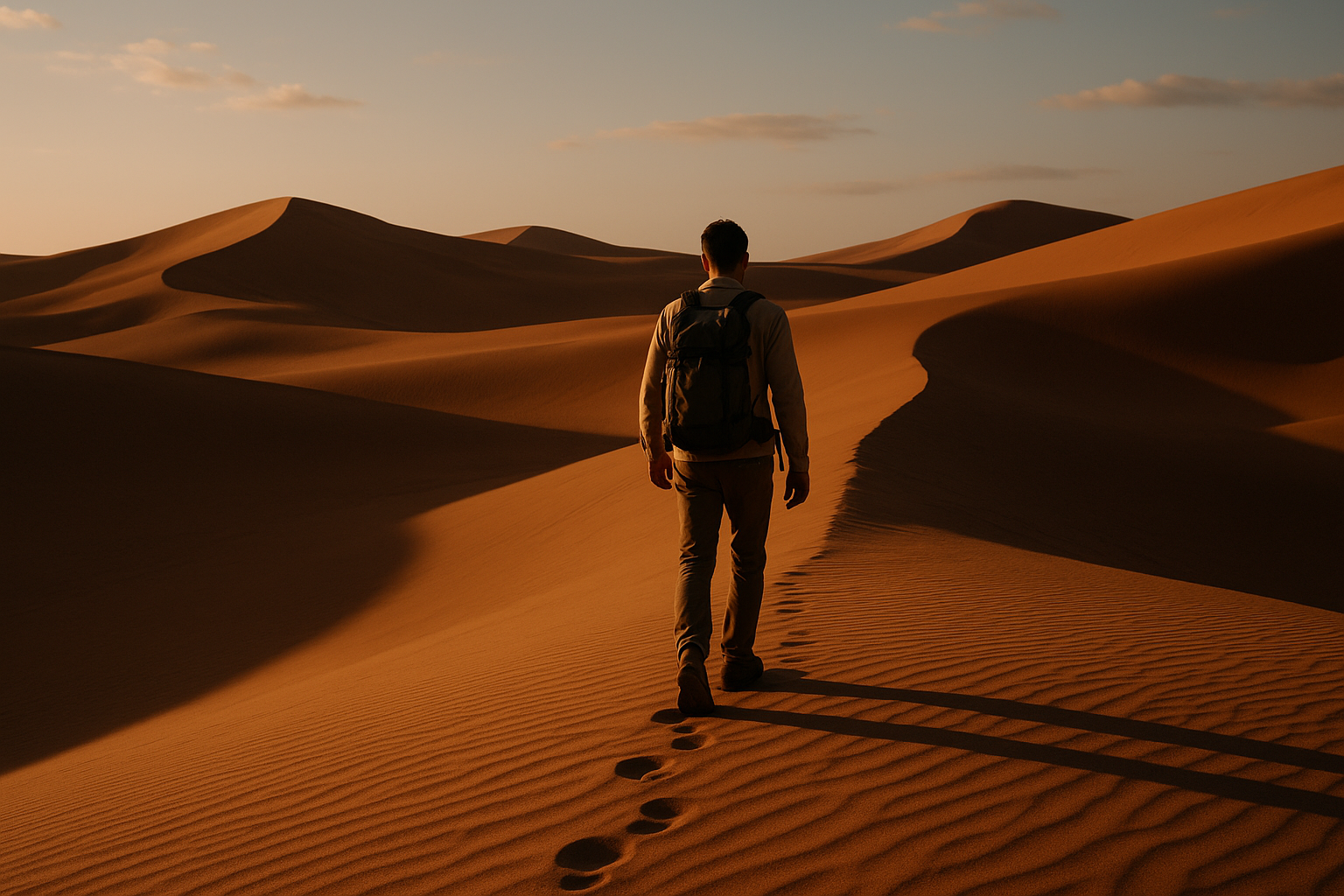Their delicate interplay crafts the essence of visual storytelling, becoming the lifeline of photographers worldwide, especially those who adhere to minimalist aesthetics. This post delves into the intriguing theme of “Harmony in Contrast: Mastering Light and Shadow for Minimalist Travelers.” We will explore the untapped potential of light and shadow in minimalist travel photography and provide you with an arsenal of tactics to capture compelling, minimalist images that resonate with viewers.
The principles of minimalist aesthetics, which embrace simplicity and reduce elements to their bare essentials, can be seen everywhere from architecture to music to visual arts. In photography, this philosophy translates into focusing on the beauty of the simple and the ordinary, stripping away excess to reveal the essence of a scene. However, mastering this approach, particularly while traveling, can pose quite a challenge. Amidst the hustle and bustle of travel, it’s easy to become overwhelmed by the multitude of sights and sounds, losing sight of the simple, profound beauty lurking in the shadows or illuminated by a soft ray of light.
The Power of Light and Shadow in Minimalist Photography
When it comes to minimalist photography, light and shadow take center stage. They become the artists, shaping and defining forms, enhancing textures, and highlighting the beauty inherent in simplicity. Whether it’s the sharp contrast of midday sunlight or the subtle hues of dawn and dusk, every variation in lighting conditions can produce a radically different image, imbuing it with a unique mood and atmosphere. Thus, understanding and harnessing these elemental forces is a critical skill for minimalist travelers.
A Journey into Contrast
The interplay of light and shadow introduces an element of contrast, a powerful tool in the hands of a skilled photographer. Contrast not only draws the eye and creates focal points, but it also adds depth and dimension, turning a flat image into a three-dimensional visual story. The beauty of this technique lies in its versatility. Contrast can be applied in numerous ways, from juxtaposing bright and dark areas to pairing complementary colors, to placing contrasting shapes or textures side by side.
As we venture further into this captivating topic, we will unfold the art and science behind creating stunning minimalist travel images using light, shadow, and contrast. We’ll dissect the elements of successful minimalist photos, and we’ll share tips on seeking out simplicity amidst the complex. Whether you’re a seasoned minimalist traveler or a budding enthusiast, our detailed, step-by-step guide will equip you with the skills to turn the ordinary into the extraordinary, transforming everyday scenes into unforgettable minimalist masterpieces.
The Dance of Light and Shadow
So, how does one master the dance of light and shadow? How can we effectively use these two elements to create a minimalist masterpiece? These are the questions we aim to answer in the upcoming sections of this article. We’ll discuss various techniques like shadow play, silhouette photography, chiaroscuro, and more. We’ll also explore practical tips on finding the right balance between light and shadow, manipulating natural light, and using artificial light to enhance your images.
Stay tuned as we embark on this enlightening journey of minimalist travel photography. Prepare to uncover the secrets of light and shadow, delve into the art of capturing contrast, and learn to see the world through the lens of a minimalist traveler. So pack your camera, open your mind, and get ready to master the art of simplicity, one frame at a time.
Embracing Harmony in Contrast: A Deep Dive into Light and Shadow
One of the most riveting and challenging aspects of photography, particularly for minimalist travelers, is the interplay between light and shadow. This interplay creates a beautiful contrast that can lend depth and complexity to an otherwise simple scene. But mastering this balance requires a keen understanding of the technical aspects of photography and an appreciation for the subtleties of light.
Understanding the mechanics of light and shadow allows you to harness their power and use them to your advantage. The basic principle is that light creates shadows and, conversely, shadows define light. This balance is what creates the contrast that gives photographs depth and dimension. But capturing this balance requires skill, patience, and practice.
This article will delve into the various aspects of light and shadow, providing practical tips and insights to help minimalist travelers capture breathtaking photographs. From understanding the golden hour to using shadows to create visual interest, this comprehensive guide will take you on a journey of discovery and exploration.
Understanding the Golden Hour: The Magic of Natural Light
One of the most critical aspects of mastering light and shadow is understanding the golden hour. The golden hour refers to the time just after sunrise and just before sunset when the light is warm, soft, and perfect for photography. The soft, diffused light during these periods creates long, soft shadows and adds a beautiful warm hue to your photographs.
Here’s a comparative table to demonstrate the difference between the golden hour and other times of the day:
| Time of Day | Light Quality | Shadow Quality |
|---|---|---|
| Golden Hour | Warm, diffused light | Long, soft shadows |
| Midday | Harsh, direct light | Short, sharp shadows |
| Blue Hour | Cool, indirect light | Minimal shadows |
For a visual demonstration of the magic of the golden hour, check out the video “Golden Hour Photography: Making the Most of the Magic Hour” by photographer David Flores on YouTube.
Mastering Shadows: Techniques for Minimalist Travelers
Shadows can add intrigue, mystery, and depth to your photographs. They can help to highlight the subject of your photo, create a sense of mood, or lead the viewer’s eye through the image. But using shadows effectively requires a good understanding of light and composition. The position, length, and density of the shadow can all influence the overall impact of the photograph.
Here are three techniques minimalist travelers can use to harness the power of shadows:
- Use Shadows to Define Forms: Shadows can be used to define the shape and form of the subject. By focusing on the areas of contrast between light and dark, you can emphasize the three-dimensional shape of your subject.
- Create Silhouettes: Silhouettes are a powerful way to create a minimalist image. By positioning your subject between the light source and your camera, you can create a silhouette effect. This technique can add drama and mystery to your photographs.
- Use Shadows for Mood: Shadows can also be used to create a mood or atmosphere in your photographs. Dark, long shadows can create a sense of mystery or suspense, while soft, short shadows can evoke a sense of calm or tranquillity.
For more insights into mastering shadows, I recommend watching “Photography Tips: Mastering Shadows” by photographer Sean Tucker on YouTube.
Putting It All Together: The Harmony of Light and Shadow
Mastering the balance between light and shadow is more than just a technical skill; it’s an art. It requires a keen eye for detail, a deep understanding of light and composition, and the patience to wait for the perfect moment. But when done right, the harmony of light and shadow can turn an ordinary scene into a masterpiece of minimalist photography.
One of the most effective ways to achieve this balance is by using the rule of thirds. This rule suggests that an image should be divided into nine equal parts by two equally spaced horizontal lines and two equally spaced vertical lines. The most important elements should be placed along these lines or at their intersections. This technique can help to create a more balanced and visually pleasing composition.
Another strategy is to use negative space effectively. Negative space is the area around the main subject of your photograph. By leaving large areas of negative space, you can draw attention to your subject and create a minimalist composition.
To see these techniques in action, watch “Mastering Light & Shadow: Travel Photography Tips” by professional travel photographer Brendan van Son on YouTube. This video offers valuable insights and practical tips for mastering light and shadow, making it a must-watch for any aspiring minimalist traveler.

Conclusion
In this article, we have delved deep into the intricate world of Information Technology and Engineering. It has been an informative journey, revealing the vast expanse of knowledge that these two fields possess. We have uncovered the importance of understanding complex concepts and simplifying them, utilizing the power of technical writing. This is the conclusion of our exploration, but it is only the beginning of your journey.
From our initial discussion on the fundamentals of IT and Engineering to exploring various facets of these sectors, we have journeyed through a complex terrain of concepts. We have discussed how IT has revolutionized the way we live and work, emphasizing the vital role of software engineering in the creation of digital solutions that fuel our modern world. We have also touched upon the intricate details of engineering principles and practices, unveiling how they shape our physical world.
Our discussion extended to the importance of technical writing in these sectors, demonstrating its role in translating complex information into understandable content. We showcased how excellent technical writing skills can break down complex jargon into clear, comprehensible language, making it accessible to both specialists and laypeople. We also shed light on the importance of a well-structured article, highlighting the critical role of details in constructing a robust and comprehensive piece of writing.
In conclusion, the realms of IT and Engineering are vast and complex, filled with intricate details and sophisticated concepts. Understanding these fields requires not just technical expertise, but also the ability to communicate this knowledge effectively. This is where technical writing plays a pivotal role, bridging the gap between experts and non-experts, making complex information accessible to all.
I would like to invite you to further explore the fascinating world of IT and Engineering. Your journey does not end here; it has just begun. Dive deeper into these fields, explore their complexities, and uncover their intricacies. Use this article as a stepping-stone, a launchpad for your exploration.
Remember, the more you learn, the more you realize there is so much more to discover. Keep seeking knowledge, keep exploring, and most importantly, keep sharing what you learn. Encourage others to dive into these fields, share your knowledge, comment on what you have learned, and inspire others to do the same.
You can find more resources for your exploration here:
Association for Computing Machinery (ACM)
American Society of Mechanical Engineers (ASME)
Your journey awaits you. Embrace it and let the knowledge lead you.
References
– Information Technology – Encyclopedia Britannica
– Engineering.com
Remember, the journey of learning never ends, and each article, each book, each discussion is a stepping stone on this journey. Continue to explore, to question, to seek. The world of IT and Engineering is vast, let’s explore it together.
Thank you for joining me on this journey, I look forward to our continued exploration in future articles.
Author: Rodrigo Almeida



